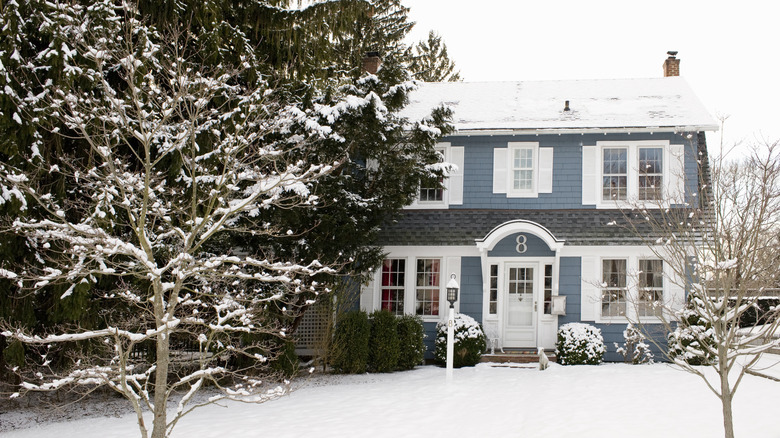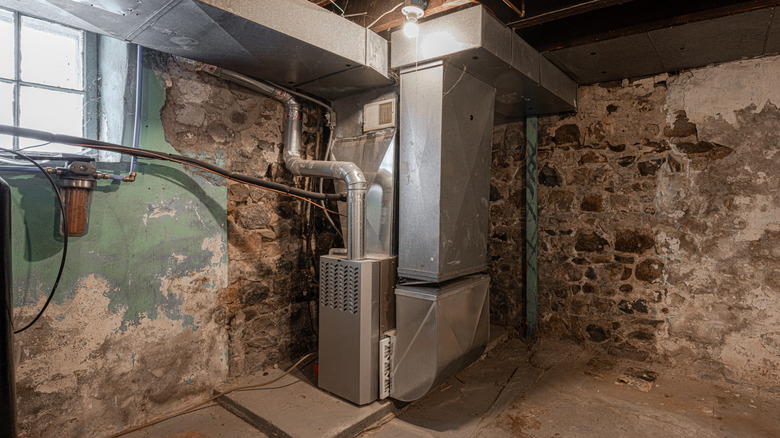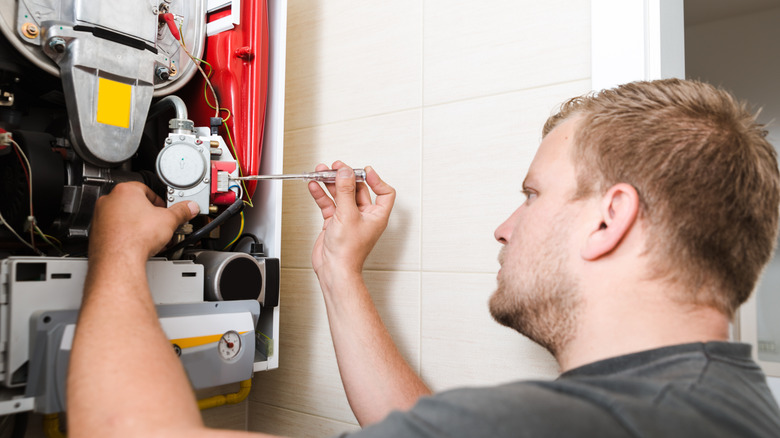The Negative Impact That Cold Weather And Snow Have On Your Furnace (& What To Do About It)
You count on your furnace to crank up the heat when the temperatures outside dip to the frigid range. When you maintain your heating system well, it can usually keep up with your demands. However, exceptionally cold temperatures can put a strain on your heating equipment, even if it keeps chugging along all winter. The system has to work a lot harder than normal to maintain your desired temperature when it's colder outside. You might notice that your furnace runs longer than normal as it tries to heat your home to the temperature set on the thermostat.
When your equipment works harder, it can cause components to wear out faster, which could result in expensive repairs. This increased wear may even shorten the life of your furnace. A lack of insulation and air leaks in your home can make the problem worse by causing heat loss. The system has to not only overcome the frigid outdoor temperatures but also compensate for heat loss in those areas. Knowing how to weather cold snaps could help you prolong the life of your HVAC system by reducing the excess wear and strain.
What cold weather does to your furnace
The extra workload your furnace puts in during cold periods can impact the unit in many ways, including reducing its energy efficiency. Because the system runs so much longer than normal, it uses more energy, which increases your utility bills. The increased operation can also clog your air filter quickly. If you don't replace your furnace and air filters regularly, you could end up with a dirty, clogged filter. This makes it difficult for air to flow through the system efficiently and could decrease the system's heating capability. Overheating is also a risk with a clogged filter. This could damage components like the heat exchanger. In newer systems with safety checks in place, overheating may cause your furnace to shut down completely.
If the cold temperatures are accompanied by snow and ice, you could face additional issues with your HVAC system, particularly with the venting. Gas furnaces need to get rid of the gases that are created during combustion, which is why your home likely has an exhaust vent. If ice and snow block the vent, you'll face reduced airflow, which affects efficiency. It could also cause carbon monoxide to build up inside your home. If you have a high-efficiency furnace, your system could be particularly vulnerable since the exhaust is cooler than lower-efficiency models.
How to prevent wear on your furnace
Keeping up with regular HVAC maintenance is an important part of improving the system's operation and reducing wear. When prepping your furnace for the chilly winter season, schedule professional maintenance to look for any safety concerns or early signs of wear. Repairing those issues before a cold snap hits allows your furnace to work better with less chance of a complete breakdown. Keep up with furnace filter changes, and check the filter regularly to see if it's getting dirty faster than normal with the increased use. It's also important to check exterior furnace vents regularly to make sure they're not blocked by snow or ice. Clearing snow from the area and adding vent shields can prevent blockages.
Easing up on your demands helps reduce strain on the system. If possible, lower your thermostat setting to give your furnace a break. Layering on warmer clothes and using blankets to stay comfortable allows you to reduce your settings comfortably. It's best to maintain a relatively consistent temperature. Lowering your thermostat significantly while you're gone puts more strain on the components when you return and kick up the heat.
If your budget allows, upgrading your home's overall energy efficiency eases the strain on your furnace. This might include adding insulation, replacing inefficient ductwork, and fixing air leaks. Inexpensive fixes include adding weatherstripping to doors and windows and installing thermal curtains to cut down on cold drafts.
When to call a professional
There are several warning signs from your HVAC system that you shouldn't ignore. Examples include short cycling, visible leaks, bad odors, and strange sounds coming from your furnace. You may also need to call a professional if your furnace shuts down completely. The furnace limit switch may shut down the unit if it overheats. This could be due to a clogged air filter, blocked vents, or other issues. Troubleshooting the filter and vents could correct the problem. However, if the system doesn't turn back on or if the furnace limit switch keeps shutting down the unit, call a professional to have them diagnose the issue. Other issues that may cause your furnace to shut off include a bad flame sensor, electrical issues, venting problems, and a bad thermostat.
Calling a professional is also an option if you've tried several fixes, such as lowering your thermostat and clearing the exterior vents, but your furnace still can't keep up. This could be a sign that a component is damaged or isn't working properly. HVAC professionals use various diagnostic tools to determine why your system isn't working correctly and can offer different solutions.
You might also need to call a professional for a replacement if your furnace is older and can't keep up. You usually get between 15 and 20 years out of a furnace. If yours is near that age, consider getting quotes from HVAC providers to explore your options. Newer furnaces are often more efficient and can keep up with heating demands better than older models that are at the end of their lifespans.



